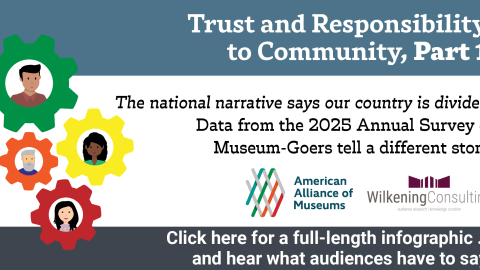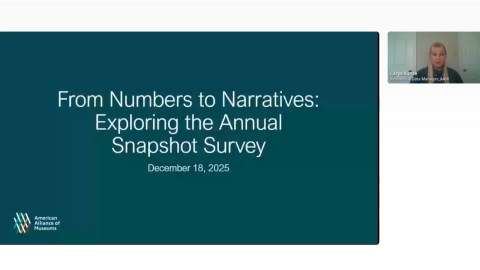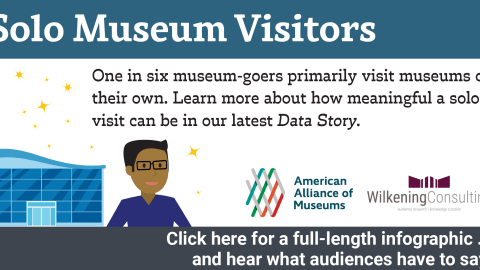This week, the Center for the Future of Museums and the Institute of Museum Ethics at Seton Hall University launch the Future of Museum Ethics forecast, a project to identify emerging issues in museum ethics. This week’s guest post by Erik Ledbetter, principal of Heritage Management Solutions and special adviser to the exercise, introduces the first round of the forecast. See the final paragraph for an invitation to participate in the forecast and a link to the initial survey.
My assignment is to launch our forecasting exercise with a review of some misconceptions, disputes and thorny issues that arise whenever we invoke the term “museum ethics.”These include the relationship of ethics to law, whether ethics are minimal guidelines or aspirations, and the enforceability of ethics codes. Let’s explore each of these in turn and see how they can help us envision the hot ethical issues of the future.
Law v. Ethics
When some of us were young, eager, and new to the field, it all seemed very simple: law was the minimum standard and ethics the higher standard. The American Association of Museum’s (AAM) Code of Ethics supports this view, asserting that
As nonprofit institutions, museums comply with applicable local, state, and federal laws and international conventions, as well as with the specific legal standards governing trust responsibilities. This Code of Ethics for Museums takes that compliance as given. But legal standards are a minimum. Museums and those responsible for them must do more than avoid legal liability, they must take affirmative steps to maintain their integrity so as to warrant public confidence. They must act not only legally but also ethically.
Nine times out of ten it works this way in the real world—but not always. Sometimes the general public’s attitude towards an ethical issue change faster than the museum field’s own understanding and expectations. If public attitudes on a ethical issue lead, in turn,to a law being enacted into law by sympathetic legislators, museums can find themselves in the uneasy position of their own Codes of Ethics suddenly becoming a minimal standard, and the requirements of the law a more stringent and restrictive test. This happened twice during the 1990s when changing public attitudes towards cultural property led to: 1) the U.S. Congress creating NAGPRA to supersede museum’s laggard handling of Native American claims to human remains and funerary objects; and 2) in the area of non-U.S. antiquities, U.S. Federal courts ruling that some foreign patrimony laws might make it illegal for a museum or private citizen to possess ancient objects covered by such laws, even though the acquisition of the object complied with the most stringent museum ethical requirements concerning provenance. The second situation persists to this day: even though AAM and the Association of Art Museum Directors (AAMD) have recently tightened their ethical guidance in the area of antiquities, their requirements still fall short of the requirements of law in some instances, and museums proceed at their own risk.
Lesson 1:In forecasting, keep an eye out for areas in which public attitudes towards an ethical issue seem to be moving faster than museum practices. These areas could be the NAGPRAs of the future.
Minimalism v. Maximalism
A second controversy, concerning the very nature of ethics, plays out between adherents of what I will call the Minimalist and Maximalist approaches to ethical issues. Minimalists believe that any action that passes the test set forth in the standards is by definition ethical; no compliant action can be said to be “more ethical” than any other. Maximalists see ethics as a rubric that can be applied to any decision or dilemma, rather than being limited to certain specific areas defined in the codes of ethics (acquisitions, deacessioning, donor support, etc.) or by the details of those codes. Maximalists believe one can always ask: is there a more just or more inclusive course of action we could take?Are we seeking a kind of mechanical minimum compliance, or are we bringing the museum into greater harmony with and support of progressive developments in society at large?
Lesson 2: Be on the lookout for issues that might exacerbate tensions between the minimalist and maximalist approaches to ethics. Who will comprise the museum workforce of the future, and are they likely to favor one approach over the other?
Voluntary v. Enforced Compliance
Finally, a third area of controversy involves enforceability. In the museum field, compliance with codes of ethics are, for the most part, voluntary; museums and museum professionals not yet in compliance in all areas are encouraged to evolve toward a stance of ever greater compliance. As a general rule, museum associations do not police compliance with their Codes through any formal enforcement procedures and sanctions. The emphasis is on counseling and assistance rather than censure. This is not, however, universally true. AAMD reserves the right to sanction members for taking actions the association’s board of directors believes contravene AAMD Professional Practices in Art Museums. Most recently, they censured Randolph College for proposing to use funds from deaccessioning collections of the Maier Museum of Art for purposes other than the acquisition of new art.
Lesson 3: Consider developments that could shift the field toward a culture of enforcement or reinforce the expectation of voluntary compliance.
This essay on differing understandings about the very nature of museum ethics just scratches the surface. (I’ve barely said anything about the flashpoint issues that set off ethical debates; I’m sure each of you could make a long list of these based on your own professional perspective.) But the methodology holds: take a present area of tension within museum practice — or outside the museum community, but with direct relevance to museums — and imagine how it might play out in changed circumstances in the future. Some issues will be rendered irrelevant by time and change. Others will become the ethical conflicts of the future. It’s up to you to tell which is which!
For an overview of the ethics forecasting exercise, see this post and the project web page. To participate in the public version of the forecast, follow this link to the first survey. Your input will be compared and contrasted to that of project “Oracles,” who have been recruited to represent a range of expertise and experience within and outside the museum field.
[Note to Oracles: to answer the first survey, follow the link provided in your assignment email—do not use the public link provided above.]
Let the forecast begin!









I guess this is one of the best way to provide in-depth understanding and information about ethics which probably will provide better education to people as well.
Regulatory compliance training